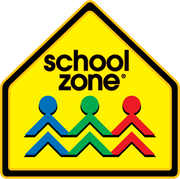Why routines are so good for kids
Schedules and routines help kids feel confident, comfortable, and in control of their surroundings. Knowing what comes next reduces stress and makes it easier to understand and meet expectations, which in turn, elicits praise and positive reinforcement.
Daily routines at home include wake-up time, mealtime, bath, and bedtime. Whether making one's bed in the morning or being on time for school, routines also help form good habits. A habit is a behavior that we no longer need to think about. It becomes virtually subconscious or involuntary. Different resources suggest different time periods for how long it takes to make a good habit or break a bad one, but in general, it's easier and quicker to learn positive habits than unlearn negative ones.

For example, adequate sleep is important for good learning, good health, and good behavior, and Michigan's Beaumont Health System offers "Adjusting Your Child's Sleep Schedule in 8 Easy Steps." In it, sleep expert Gary Trock, M.D., suggests easing kids into their school year bedtime about 2 weeks before classes start. He also says, "no exercise two hours before bedtime and no electronics one hour before." Daniel Frattarelli, M.D., a Beaumont pediatrician, says that if bedtime is a challenge, waking kids up earlier can help make them tired earlier.
The article also says that in general, kids between ages 5 and 12 need about 10 hours sleep each night.
Thread "school" (learning!) through and through
Malcolm Gladwell, Canadian journalist, author, and public speaker whose work often examines—and sometimes upends—commonly held beliefs, has said, "Practice isn't the thing you do once you're good. It's the thing you do that makes you good."
Both habits and skills take repetition, usually lots of it, to lock in.
Loss of routine the past couple years has also meant less repetition and reinforcement. For decades research has shown that even in a regular year kids lose much of their previous school year gains over the summer. However, the United Nations has called the pandemic "the largest disruption to education in history." Of course, the degree of that disruption varies by many factors including the country, school district, time spent in remote learning, and the individual child.
In the U.S., this March the Brookings Institute reported sizable drops in both math and reading scores on standardized state tests after the peak of the pandemic. To try and make up for that, some districts will be starting the school year earlier or ending it later.
Parents can help kids keep skills sharp by using them in day-to-day-situations. Were kids learning multiplication last year? Other math? What was their reading level? How often have they used these skills over the summer? Ask them to read roadway and retail signs, estimate purchase totals, make change, multiply place setting pieces for number of guests, or divide a pizza so that everyone gets the same number of slices. Do some measuring to see what fits where and by how much.

Give extra practice in a flash
In addition to those "teachable moments" that come up while running errands and taking care of other everyday tasks, spending just a few minutes each day focused on learning can make a gentle re-entry to school.
Flash cards remain an excellent way to practice early math and language skills. They improve speed, accuracy, and memory. They are also extremely portable, and kids can use them on their own or compete with a friend or sibling.


Phonics Made Easy Flash Cards help early readers practice short and long vowel sounds like pig and pie as well as blends and combination sounds like pleasant and pheasant. They help kids learn to read with comprehension too.
 Older kids will benefit from the Get Ready Flash Cards Multiplication & Division(2-Pack). Multiplication 0-12 Flash Cards show 110 problems that range from 0x0 to 12x12; Division 0-12 Flash Cards include 104 problems that range from 4÷2 to 144÷12. Find the answer to each problem on the flipside. Parent Cards in both packs suggest activities and strategies to extend the learning and make it fun. Do speed drills, play games, and change it up!
Older kids will benefit from the Get Ready Flash Cards Multiplication & Division(2-Pack). Multiplication 0-12 Flash Cards show 110 problems that range from 0x0 to 12x12; Division 0-12 Flash Cards include 104 problems that range from 4÷2 to 144÷12. Find the answer to each problem on the flipside. Parent Cards in both packs suggest activities and strategies to extend the learning and make it fun. Do speed drills, play games, and change it up!Easing kids back into a routine that hasn't really been routine in a while, reminding them of what a school schedule "looks" like, helping them review and practice last year's skills and prepare for learning new ones, and providing lots of praise and encouragement along the way will help get the new school year off to a great start.












